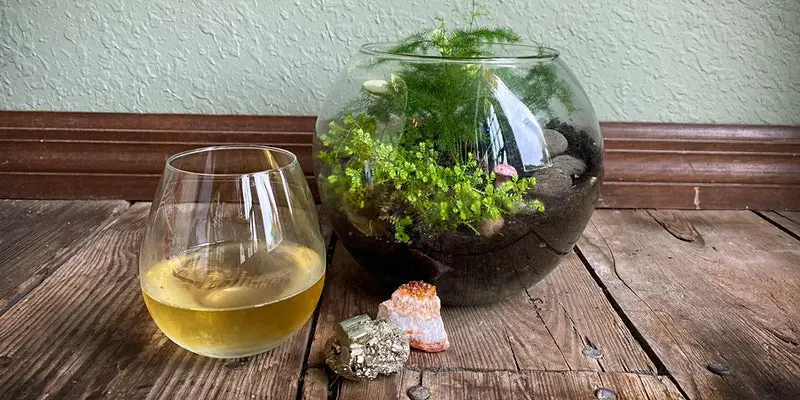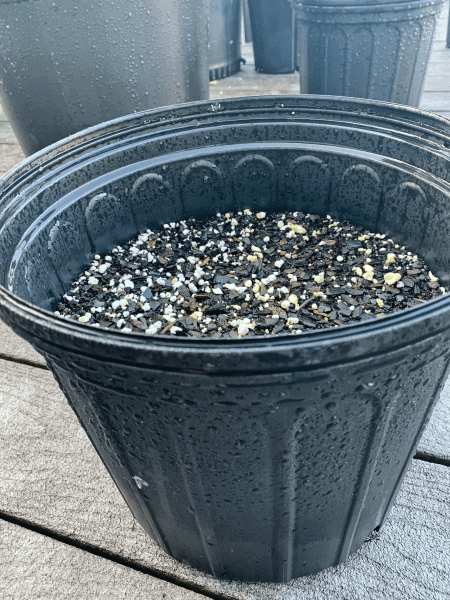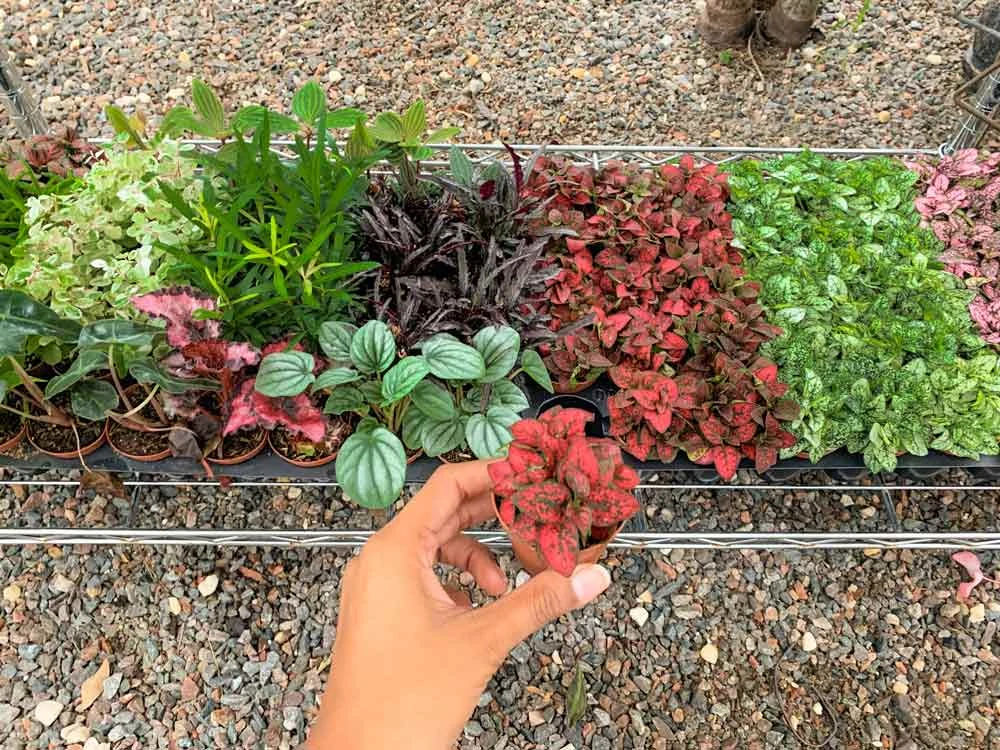by Amanda Rose Newton
Terrariums have been around since the 1800s and although their popularity has ebbed and flowed throughout the years, the pandemic certainly had us looking for more excuses to bring the “outside” indoors.

Nathaniel Ward, the man credited with the original terrarium, was certainly thinking along those lines when he crafted his glass cavern for plants. He originally discovered that life could go on in a properly constructed chamber of glass when observing a moth in a sealed jar. The ferns present in the jar provided oxygen and condensation for the moth, enough to keep the little micro-ecosystem going.
Terrariums allow us to create our own little ecosystems that we can enjoy, no matter how much space we occupy. It is a way for us all to bring nature in.
When designing your own miniature world, there are many directions to choose from. Below are suggestions for media, plants, and containers appropriate for creating your own terrarium.
Best Containers for Terrariums
There is no hard rule as to what you use to house your plant treasures. Traditionally, terrariums are glass, but any transparent material will work. Old vases, ashtrays, candleholders, and even mason jars can make for a unique enclosure. You can choose to leave them open or sealed. Here is a quick list of container possibilities:
- Apothecary Jars
- Mason Jars
- Glass Vases
- Glass punch bowls
- Stemless wine glasses
- Glass ashtrays
- Candleholders
- Fishbowls
Best Substrate for Terrariums
Not only does substrate supply nutrition, it also adds visual interest! Use your own creativity to layer the following options to make your display special:

• Small stones
• Colored glass
• Pebbles
• Potting soil (a must to support plant life)
• Activated charcoal (freshens water and fights bacteria)
• Peat moss (holds in moisture)
• Sand
Best Plants for Terrariums
Some plants really are better suited for the terrarium than others. Ideally, you want something that will remain small and is slow-growing. The following is a list of foolproof choices for beginners and beyond:

- Air plants: So easy! Low maintenance and easy to keep attractive. Look for Tillandsia spp.
- Succulents: we sell a variety of 2” succulents that offer texture, color, and fun!
- Cacti: 3” pot size or smaller adds visual interest and excitement to the miniature garden
- Small foliage plants: from mini crotons to tiny alocasia, we have plenty of amazing 2” beauties just begging to be grouped together in a terrarium. Although these will grow, they can be easily trimmed to the desired size.
- Ferns: Their feathery and lush appearance will give your terrarium a Mesozoic look. Perfect company for those plastic dinosaurs everyone has lying around (I can’t be the only one)
DIY Terrarium Step by Step
Now that you have assembled your supplies, it is time to put them together into a successful miniature plant society.
1. Cover the bottom with roughly 2 inches of stones, glass, or pebbles for drainage
2. Add in your charcoal if using in a small layer over the stones
3. Soil is next, and you want to use about 2 ½ inches worth to ensure plant support.
4. Next, plants can be added!
a. Plant your biggest (tallest) plants first and make a hole large enough for the plant’s roots
b. Add in your remaining plants as you see fit. Make sure to leave a little space between each.
5. Complete your look with personal touches! Have fun- add in plastic figurines, miniature gnomes, fairies, or other important trinkets.
To make sure you get the most out of your terrarium, be sure to water from the base every two weeks if it looks a bit dry. For best results, place your terrarium in a spot that receives indirect bright light.
For a visual demonstration check out our How to Build a Terrarium video!


